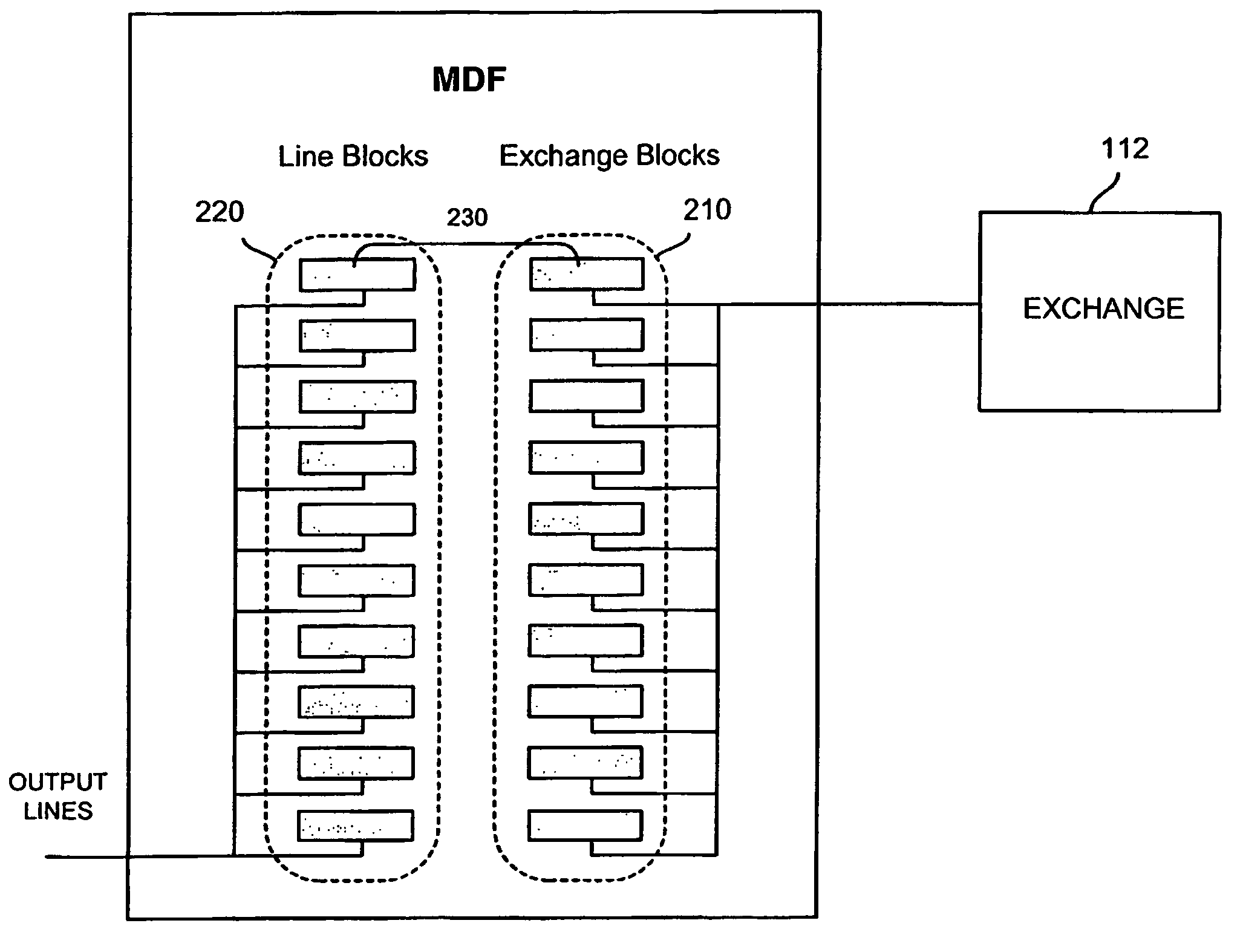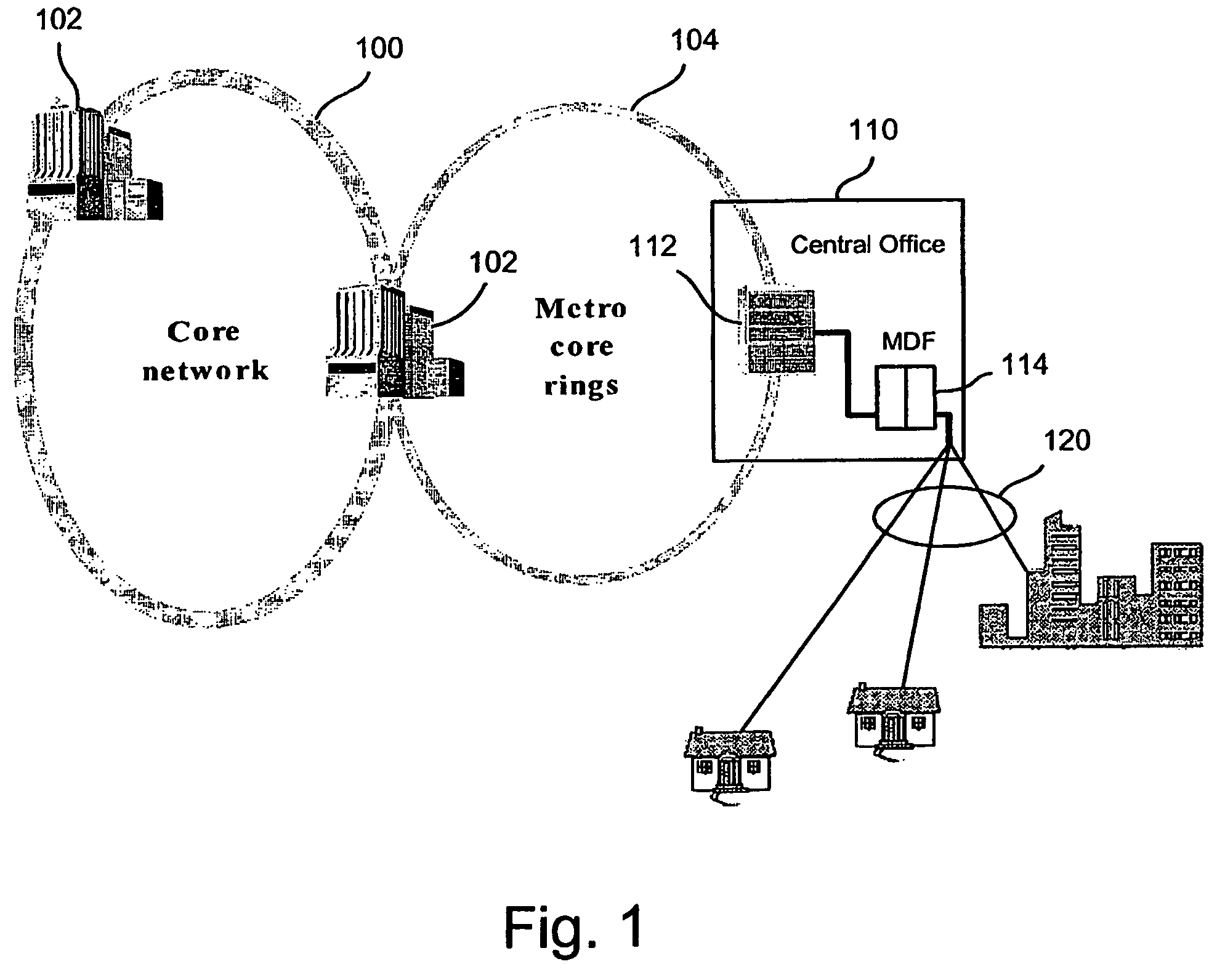Method and system for remotely automating cross-connects in telecom networks
a technology of remote automation and telecom network, applied in the field of modern telecommunication network, can solve the problems of one of the most significant costs faced by telecommunication providers today, the natural tendency of manual processes to be prone to errors, and the temporary loss of existing services
- Summary
- Abstract
- Description
- Claims
- Application Information
AI Technical Summary
Benefits of technology
Problems solved by technology
Method used
Image
Examples
first embodiment
[0040]FIG. 3 illustrates an automated cross-connect system that can be controlled from a remote location 350 operating in accordance with the invention. The automated cross-connect system is a central office application that is largely concentrated with automating the cross-connections between the exchange side and the line side within the main distribution frame (MDF) 320. MDF 320 comprises a center stage 324 of cross-connect boards interconnected between the standard the exchange side MDF switch groups on the exchange side 322 and on the line side 326. The exchange side line pairs are connected to the ports at the central office switch 310, where at one end are terminated in blocks on the exchange side switch groups 322. Similarly, the output lines on the line side are terminated in blocks in the line side switch groups 326, which in the simplified layout feeds out to a street cabinet 328 typically located in the vicinity of the subscribers. In terms of capacity, these street cabi...
second embodiment
[0066]FIG. 18 shows an automated cross-connect system in accordance with the invention whereby, in addition to the MDF, non-central office cross-connect cabinets and drop point sites are also automated and controlled from a remote location. Although only one cross-connect cabinet 328 and two drop point sites 330 are shown in FIG. 18, it is to be understood that they are representative of a plurality of such cabinets 328 or drop points 330 are deployed throughout the network as remote switch groups that are capable of being supervised by a single site controller 332 within the central office. The site controller 332 includes a modem 360 communicating over a RS485 link 362, which is routed through the MDF to interconnect the site controller 332 to the automated cabinets 328 and drop point sites 330. The modem uses a point-to-point (PPP) protocol with the addition that the signal is overlaid on the voltage that is used to power the remote installation. It should be understood that the ...
PUM
 Login to View More
Login to View More Abstract
Description
Claims
Application Information
 Login to View More
Login to View More - R&D
- Intellectual Property
- Life Sciences
- Materials
- Tech Scout
- Unparalleled Data Quality
- Higher Quality Content
- 60% Fewer Hallucinations
Browse by: Latest US Patents, China's latest patents, Technical Efficacy Thesaurus, Application Domain, Technology Topic, Popular Technical Reports.
© 2025 PatSnap. All rights reserved.Legal|Privacy policy|Modern Slavery Act Transparency Statement|Sitemap|About US| Contact US: help@patsnap.com



